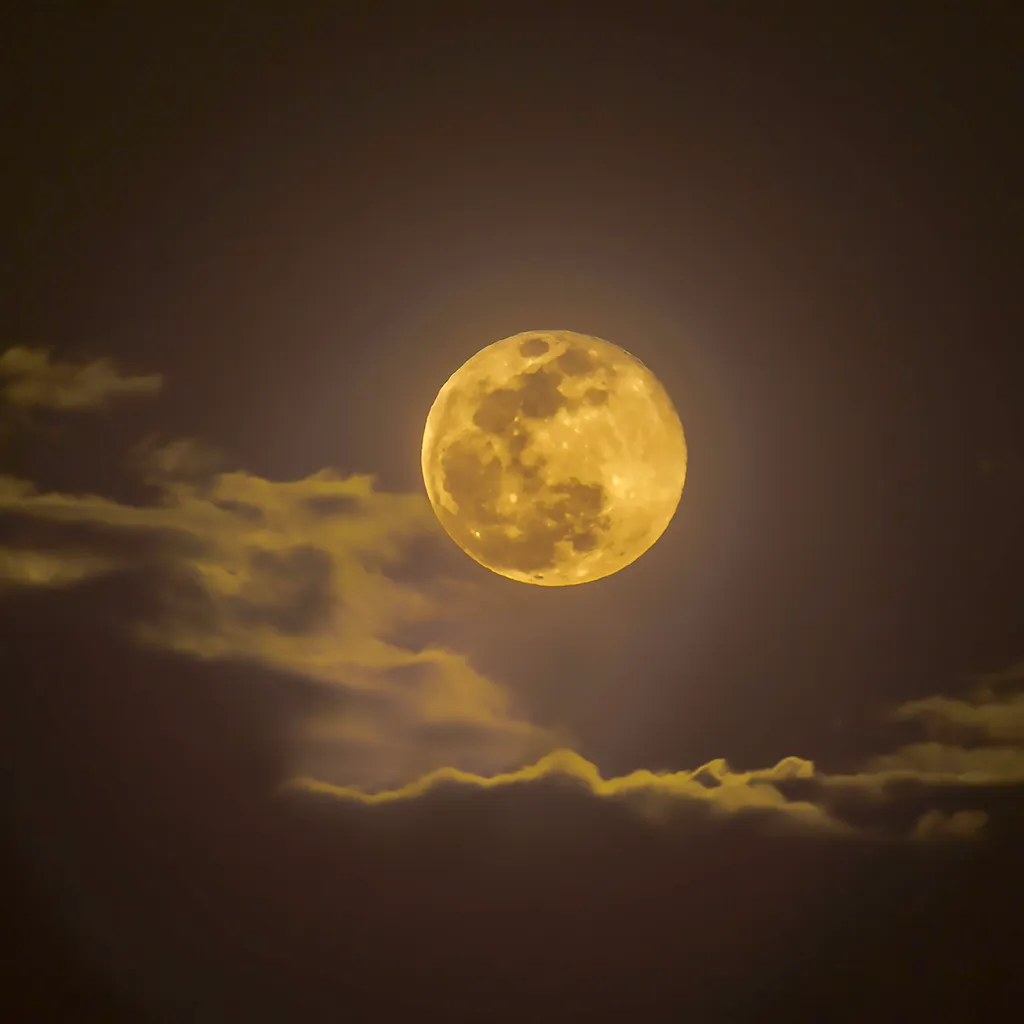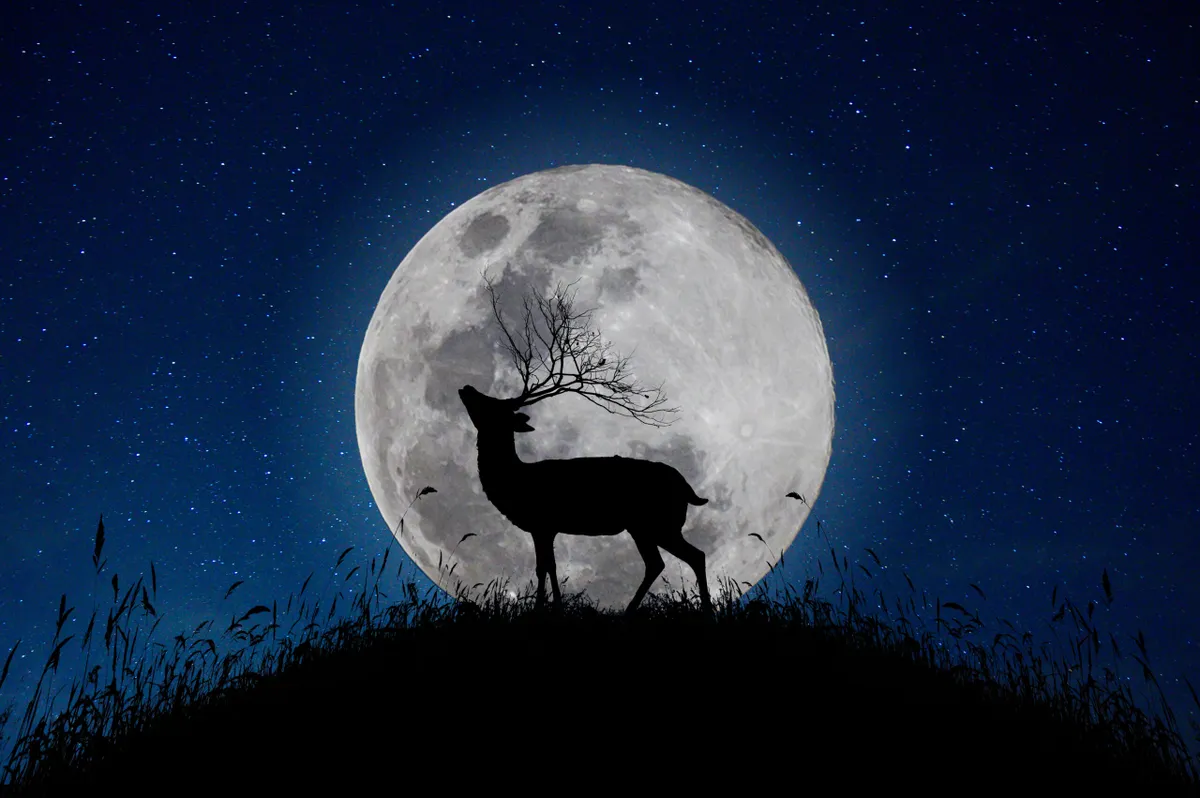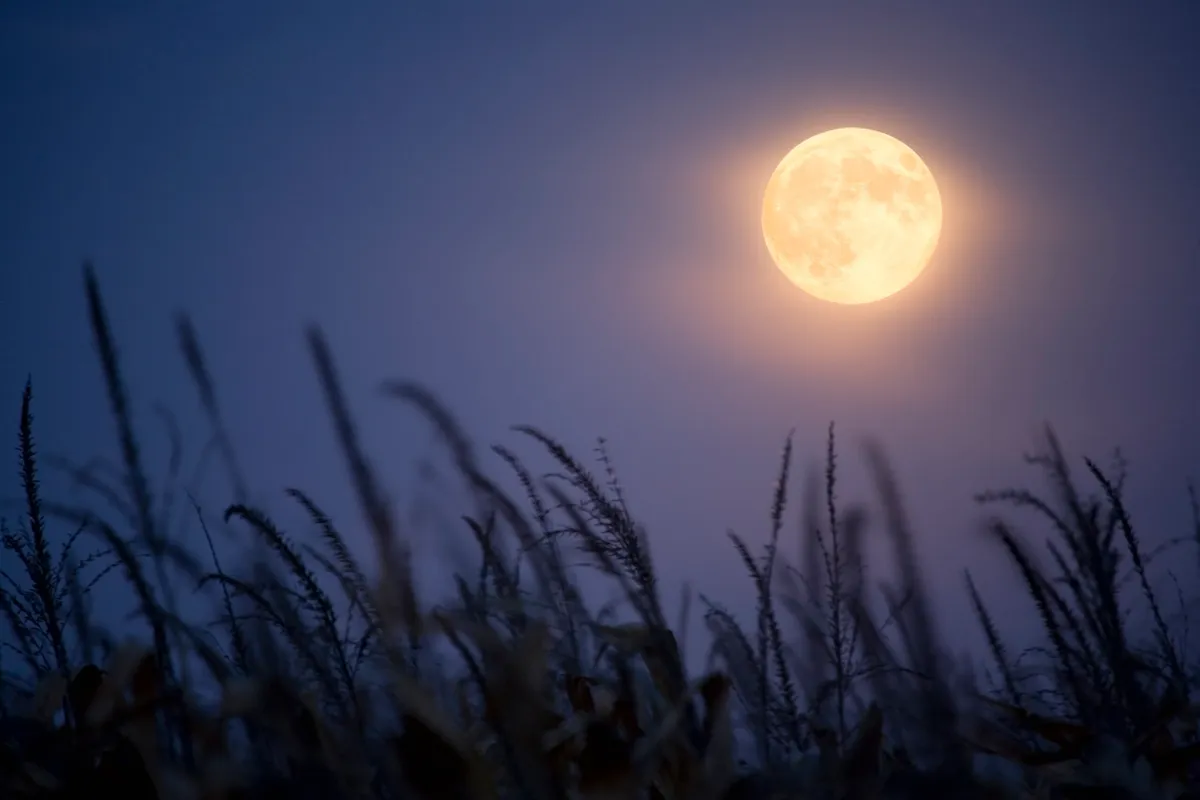Did you know that each full moon has its own name? January's full moon is known as the Wolf Moon, while February's is the Snow Moon; the Pink Moon appears in April and the Strawberry Moon can be seen in June. Later in the year, it's the turn of the Harvest Moon in September and the Hunter's Moon in October.
In this lunar guide, we take a closer look at each full moon, revealing which month they usually occur in and where the full moons get their names.
- When is the next meteor shower?
- Stargazing guide
- 14 things stargazers should know
- 3 ways the moon affects wildlife

Full moon names
Wolf Moon
The first full moon of the year conjures up visions of snowy wastes and wolves howling about the pain of their empty bellies. Possibly named by the Celts (who also called it the Quiet or Stay Home Moon), it’s known by some Native Americans as the Severe Moon.
When is the Wolf Moon?
The full Wolf Moon usually appears in January.
Snow Moon
It may not be the case so much in Britain nowadays, but many parts of the Northern Hemisphere still enjoy or endure a covering of snow in February, which gave this month’s moon its name. It’s also known as the Storm Moon and, chillingly, the Hunger Moon.
When is the Snow Moon?
The full Snow Moon usually appears in February.

Worm Moon
Named by Native Americans after the worms’ habit of rising towards the surface of soil as it thaws – a sure sign of spring. If the full moon occurs after 21st March, it’s used to fix the date of Easter which is why it’s sometimes known as the Paschal Moon.
When is the Worm Moon?
The full Worm Moon usually appears in March.
Pink Moon
This moon takes its name from the pink wildflowers – notably pink phlox – that appear in spring in North America. In the same vernal mood, Celts knew it as the New Shoots or Budding Moon, while Anglo-Saxons opted for Egg Moon (which may help account for Easter eggs).
When is the Pink Moon?
The full Pink Moon usually appears in April.
Flower Moon
Come May, spring flowers are abundant in the northern hemisphere, so it’s no surprise to find this month’s name reflecting that. However, it does a variety of rival names, including the Hare Moon, Milk Moon, Mothers’ Moon and Corn Planting Moon among others.
When is the Flower Moon?
The full Flower Moon usually appears in May.
Strawberry Moon
Wild strawberries foraged by Native Americans begin to ripen in June, a culinary event important enough for moon-naming. Some Europeans know this as the Rose Moon while, for Anglo-Saxons, the advent of summer meant it was time to mow meadows, so they called it the Mead Moon.
When is the Strawberry Moon?
The full Strawberry Moon usually appears in June.
Buck Moon
Another name devised by Native Americans, the ‘buck’ here refers to the male deer whose antlers start to regrow in July. The summer also brings storms, so in some places it’s known as the Thunder Moon. By contrast, Anglo-Saxons knew it as the Hay Moon, because that’s when they harvested the crop.
When is the Buck Moon?
The full Buck Moon usually appears in July.

Sturgeon Moon
Not a fish that is eaten much in Britain today, the sturgeon used to form a significant part of the Native American diet each August, when they were plentiful in the Great Lakes. The effect of the summer haze means this moon is also sometimes called the Red Moon.
When is the Sturgeon Moon?
The full Sturgeon Moon usually appears in August.
Harvest Moon
Celebrated by Canadian singer Neil Young, the Harvest Moon is the best known of all the full moons. Rising around the time of the autumn equinox, it has been the friend of farmers for millennia, its light extending the hours they can gather crops in from the fields.
When is the Harvest Moon?
The full Harvest Moon usually appears in September.

Hunter's Moon
The glow from this moon gave hunters the chance to carry out their stalking at night, to the chagrin of deer and other prey. Confusingly, every three years, this full moon is closer to the autumn equinox than the September moon and so becomes the Harvest Moon.
When is the Hunter's Moon?
The full Hunter's Moon usually appears in October.
Beaver Moon
Also known as the Frost or Mourning Moon (signifying a time of letting things go), there’s some debate over how the Beaver Moon got its name. It’s either because beavers are at their busiest buildings dams and lodges in time for winter, or because in November traps were set for them.
Did you know the North American beaver is Canada's national animal?
When is the Beaver Moon?
The full Beaver Moon usually appears in November.
Cold Moon
December may not always be the coldest month of winter but it can certainly feel like it after a mild autumn. This full moon is also known as the Long Nights or Oak Moon. To the Celts though, it was the Wolf Moon (which nowadays rises in January).
When is the Cold Moon?
The full Cold Moon usually appears in August.
